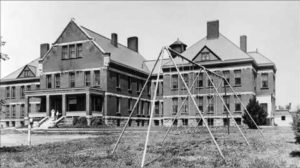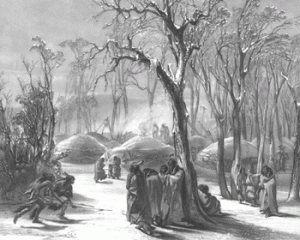When the Canton Asylum for Insane Indians was new, its electric lights and coal heat were luxuries many of its patients had not experienced before. It seems undeniable that they received attention for their physical problems or illnesses, though any psychiatric treatment was rudimentary at best. However, as more patients arrived and the ratio of attendants to patients increased, care in this relatively tiny asylum began to decline in quality.
Meals may have been hearty and sufficient at first, especially when they were supplemented with garden produce and fish caught by patients. Early on, however–at least by 1904–the asylum’s soft water supply proved insufficient; at the same time, Superintendent Oscar Gifford’s annual report noted that even the available well water “is not suitable for drinking and bathing purposes.”
The asylum’s second superintendent, Dr. Harry R. Hummer pushed for numerous improvements for the asylum’s grounds and outbuildings, but did not seem as concerned about patients’ amenities. Investigations show that he was accused of allowing patients to walk around the asylum poorly clothed for winter conditions. Patients had holes in their garments and straw hats instead of woolen ones among other deficiencies. Unlike Cantonites (see last post) and earlier Native Americans in the area, asylum residents did not seem to have opportunities for winter fun.








